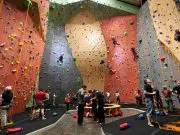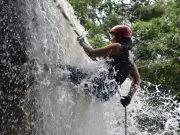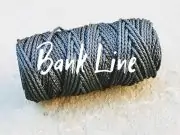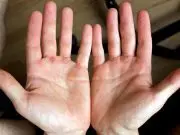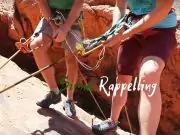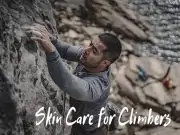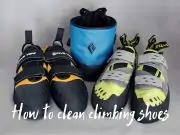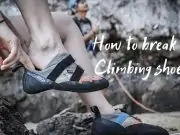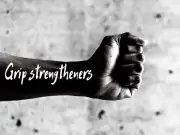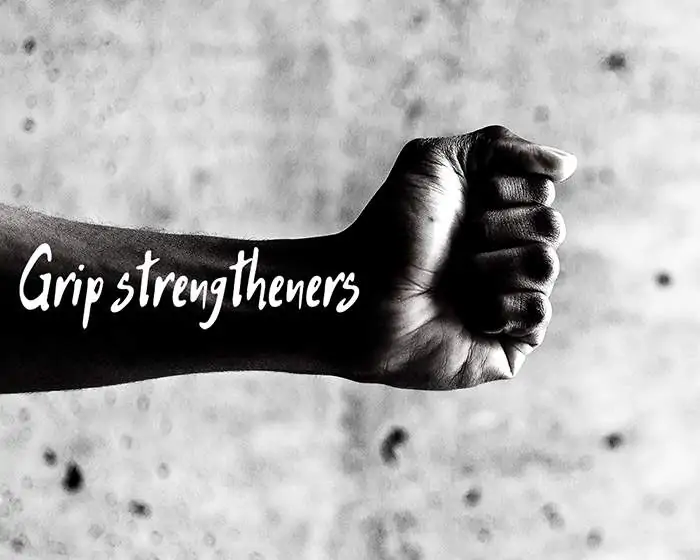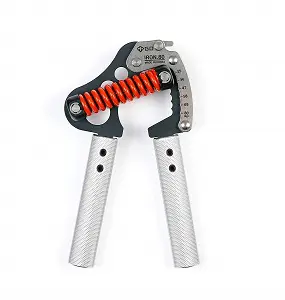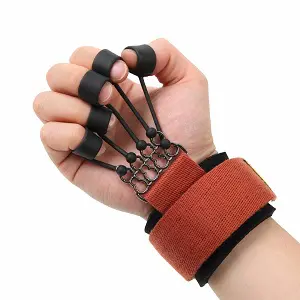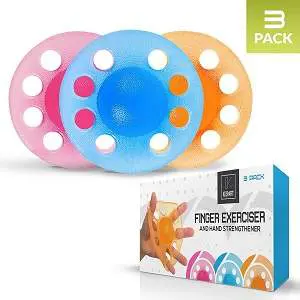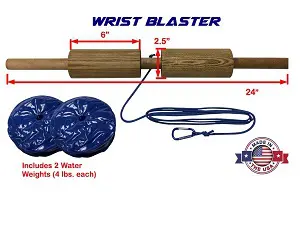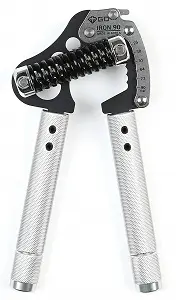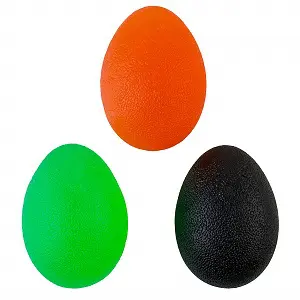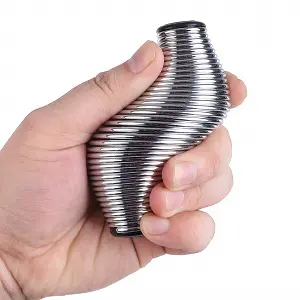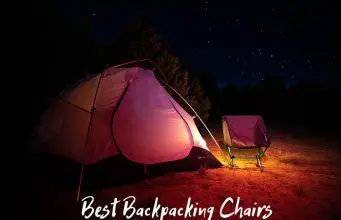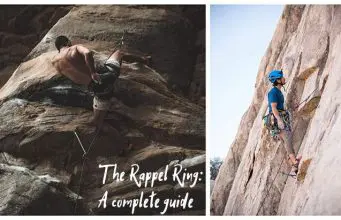Climbing is one of the most challenging full-body workouts you’ll ever experience, but let’s be honest: your arms are going to do most of the heavy lifting. In order to improve their resilience and stamina, many climbers look for specific workouts, especially when they can’t afford to spend many days a week on the cliffs.
When looking for ways to improve your performance as a climber, you’re bound to come across grip strengtheners. But can these climbing gadgets really help you become better at climbing or rappelling?
Grip strengtheners do work and they can help you improve your performance. However, they act as add-ons to your climbing routine by helping you train your flexor and extensor muscles. The extensors are generally neglected during a regular climb, so focusing on those is always a good idea. However, focusing on the flexors isn’t a bad call either – the tougher they are, the faster and lengthier your climbing sessions will be.
If you can’t climb for a while but still want to keep your skills sharp, and if you don’t have access to a portable hang board or even to a climbing gym, grip strengtheners are your best solution. That’s why so many people carry them around during their travels or take them to work. it is worth noting that there are quite a few different types of grip strengtheners out there, some of which are quite weak, while others can actually deliver results.
I’m going to tell you which ones are worth your time so that you won’t end up spending money on a disappointing product. Moreover, different grip strengtheners focus on toning different parts of your arm, so we’ll have to take a look at each type in detail and figure out which one is the best for you specifically.
How does climbing train your arms vs grip strengtheners?
The main difference between regular climbing and using a grip trainer is that climbing requires static muscle contractions that cope with your overall body weight, while grip strengtheners involve squeezing and putting your forearms to work using positive movement.
Some grip strengtheners aren’t strong enough to provide a considerable boost in strength, but they are very good at conditioning and preventing injuries by keeping your wrists and arms warmed up and ready for action.
With the risk of repeating myself, it’s important to remember that climbing puts the flexor tendons in the forearm to work, as these are used to grip objects and ledges. However, the extensors are often neglected as a result, which is why many climbers run the risk of getting carpal tunnel or various forms of tendonitis. Using grip trainers can prevent this, but not all grip strengtheners are created equal.
Some of them, such as squeezers, focus on the flexors, which you would be training while climbing anyway. However, dedicated extensor trainers keep the extensors in shape, and that’s what I would recommend for any climber that wants to balance the muscle mass in his or her arms.
What are the best grip strengtheners available?
1. Logest Metal Hand Grip Set.
We’ll start off with these simple devices that promise to enhance your grip strength by exercising your hand, fingers, wrist, and forearms. While it’s quite useful for people who practice weightlifting or CrossFit, the Logest set is also well-suited for climbers and rappelling enthusiasts.
The best part about these grip strengtheners is that they available in three different tension levels, namely 100lbs, 150lbs, and 200lbs. This means that you can ramp up your training in order to build power gradually as opposed to wearing out your tendons straight away. Unfortunately, I don’t think this trainer is adjustable, which means that you’ll have to buy a different one whenever you’ll want to take things up a notch.
The handles are slip-resistant, which is always a big plus, and they feature textures and knurl marks in the middle for improved hand and finger control. While they are durable and reliable enough on their own, it’s up to you to come up with a training regimen and keep at it in order to see results.
This is a simple and affordable grip trainer set that’s well-suited for beginners looking to improve their resilience gradually and without shocking their system. If you want something a bit more challenging or better suited for professional use, just keep on reading.
2. GD Hand Grip Strengthener Iron Grip Light.
This is an adjustable hand gripper that offers resistance between 55lb and 176lb. There are six total stages available for adjustment, which means that you can adjust your training routine pretty much instantly. That would be very important for me, especially if I was looking to gradually improve my performance over the course of a few months.
However, when compared to the grip strengthener above, this one is a bit more expensive. It’s also a lot more versatile, and arguably more pleasing to the eye. It relies on a strong compression spring and a pair of aluminum handles. It’s lightweight at 1.17 pounds, it’s quite sturdy, and apparently silent as well since the spring doesn’t make any noise.
Another aspect worth mentioning is the axis of the handle, which is not twisted in any way. This means that you won’t need to get special grippers for each hand – this one works just fine with any of them. This is a really good grip trainer, and I do recommend that you give it a chance.
3. Joagym Finger and Hand Extensor.
Remember when I told you that you should also train your extensors for climbing? This little device should get the job done nicely, as it was designed to train your fingers individually or together using various tension forces. Also used for Hand Yoga, the Joagym finger and hand extensor comes with an ergonomic design based on a Velcro adjustment system. This means that pretty much anyone can wear it and use it properly no matter the size of their hands or fingers.
The product works well with either hand, so you won’t have to buy two of them. The primary material used for the finger band is silicon, while the strap is a high-grade neoprene.
In order to use it, just secure the wrist strap firmly using the band attachment on the palm side, and then anchor the individual bands before placing your fingertips into each band ring. Just fold in and out in order to build up strength and resilience.
4. Keepafit Finger Exerciser & Hand Strengthener.
A simple solution – the finger exerciser by Keepafit works pretty much the same way as a therapy ball and stretcher. It provides a very good extensor workout and will help you reduce hand soreness, fatigue, or carpal tunnel symptoms. In the box, you’ll get three rings in three different colors.
Each color represents a different tension, namely light tension for Pink, medium for orange and heavy tension for blue. That last one is quite hard to work with, but as you’ll practice and become stronger overall, you’ll eventually manage to move on to this extreme training regimen as well.
You can also get the Heavy Tension or Medium Tension rings individually just in case you want to skip on the pink one. However, most people just get the entire pack and work their way from Pink to Blue gradually. Whether you’re a climber or you work in an office typing all day, these finger exercisers should help you out a great deal.
5. Wrist Blaster Exerciser for Forearms, Hands, and Wrists.
While not technically a grip strengthener, the Wrist Blaster can help you improve your grip strength and endurance. It all depends on the types of exercises that you’re planning to use it for. The Wrist Blaster is created entirely by hand in the United States using durable birch wood.
The smaller cylinder is 25″ long and 1″ wide, while the thick cylinders are 6″ long and 2.5″ wide. This product relies on its different outside diameters that help you focus on different parts of your forearm, wrist, and hand.
With the Wrist Blaster, you can train your forearm flexors and extensors. Wrist rollers are generally recognized as some of the best solutions for growing forearm size and endurance. Depending on your strength level and fitness, you can start with less weight such as 5lbs, and you can work your way up as you feel comfortable.
The product is available in two grip sizes (2.5 inches and 3 inches) and with three grip types, namely a cylinder, a sphere, or a shorty sphere.
6. GD Iron Grip EXT 90 Hand Strengthener.
The GD Iron Grip is a relatively expensive grip strengthener, but it also has the potential to be the best of them all. Truth be told, I’d rather recommend a high-quality product that actually gets the job done as opposed to one that just promises to deliver but fails in the attempt.
The GD Iron Grip EXT 90 is a very durable and effective hand strengthener. It has six levels of adjustment in total, which means that you won’t have to limit your progress as you advance and get stronger. Resistance is ensured by a solid steel spring that you’ll have to compress repeatedly in order to see results.
You can use this thing pretty much anywhere and whenever you have some spare time. It doesn’t make any noise, which is always what you want to go for. The GD Iron Grip offers between 55 lbs and 198lb of resistance, which is quite a bit more than the GD Hand Grip that I presented above.
7. The Friendly Swede Strength Trainer.
The Friendly Swede is perhaps one of the most popular therapy balls and strength trainers out there. It’s cheap, it has a basic yet effective design, and it is suitable for people of all ages. Well, that’s not entirely true as the Friendly Swede is recommended for a minimum age of 5.
How does it work? Just like an ordinary stress ball. You hold it in your hand and squeeze it. However, this habit can actually help you improve your hand and forearm fitness as well, even though the 30lb to 40lb resistance probably won’t be enough to qualify as serious training. You can use these colorful stress balls to prevent tension and alleviate joint pain. It also helps with stress relief, of course. There are many different exercises you can do with the Friendly Swede, including finger training, wrist training, and forearm exercises. It’s all up to you how you want to use this thing, but if you do it right and consistently, you will see some results.
The product is made out of skin-safe thermoplastic rubber, and it is available in three different size options. There are multiple colors to choose from as well.
8. Pivot Performance OmniGrip 2.0 Strength Trainer.
The OmniGrip 2.0 by Pivot Performance is a relatively weird-looking climbing gadget, but we’ll get to that in a moment. First off, this is a highly affordable grip strengthener and stress ball that helps you exercise your hand, fingers, and thumbs while relieving stress and improving your mood.
This is a 3-in-1 product that will appeal to a wide array of outdoor enthusiasts, from golfers, to rock climbers, mountaineers, and fencers. The shape of the OmniGrip 2.0 was designed specifically for easy grip and easy access to a trigger point that helps release endorphins through stress relief. The grip is stainless steel, and it boasts a non-slip finish for even more comfort.
It’s not a particularly expensive device and it can be used daily for a light and relaxing training routine. This makes it a must-have even if you’re not a pro. Actually, beginners will definitely see the benefits quicker, as they have more training to catch up to.
Grip strengtheners and rappelling.
Can grip strengtheners help out when it comes to rappelling? Since rappelling and climbing are two sides of the same coin, I’d say that improving your grip and forearm strength will definitely help you perform better while rappelling. Keep in mind that most of these grip trainers were designed to enhance strength for different types of people: some are climbers, true, others practice rappelling, but others are musicians, IT workers, medics, or writers.
I’d even go as far as saying that everyone would benefit from using a grip strengthener from time to time. So yes, grip trainers can help out if you practice rappelling – your brake hand needs to be as strong as possible in any case, so extra endurance and stability are always welcomed. Needless to say, if the muscles in your forearms are balanced evenly, you will be better at belaying as well. There really is no downside to using these little gadgets, so just find one that suits your needs and go for it!
Is there another way to improve grip strength apart from grip strengtheners?
If you don’t want to buy a product and are looking for a more natural approach, you can always try the so-called “Rice Bucket Training” routine, which basically involves putting your hands in a bucket full or ride and squeezing as hard as you can. This workout is incredibly popular with climbers, but it’s not exactly as effective as some would have it be.
The rice bucket training routine is a good way to recover from injuries or build strength before you even consider going out on your first climb. It’s perfect for beginners but not so much for pros, at least in my opinion. That’s not to say that you shouldn’t do it anyway. The training helps your muscles evolve evenly, as it allows weaker muscles to catch up with your stronger ones. After you’ll do this exercise regularly for a while, you’ll start to notice that it doesn’t hurt as much, and eventually not at all. That’s when you know that your forearms are in peak condition.
There are many different ways to perform the Rice Bucket Training: you can dig your thumbs into the rice repeatedly, rotate your fists in the rice, stab the rice as deep as you can with your fingers, move your fists from one side to the other, or just grab rice in your hands and try to squeeze it as hard as you can. The sky’s the limit really.
Conclusion.
Grip strengtheners certainly have their place in the training routine of any serious climber. While they will never be able to replace an actual day on the cliffs, they can help you strengthen parts of your arms that you would otherwise neglect.
I don’t think that you should go ahead and spend a lot of money on them, but it definitely wouldn’t hurt to have one or two around and use them from time to time. Some people are quick to call grip strengtheners useless or gimmicky, but I just think they didn’t use the right one, or maybe they just didn’t give them enough time. I say give them a try at the very least, but a good solid try and not just for a couple of days.
Then tell me how much of a difference they made.


